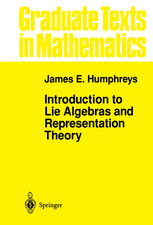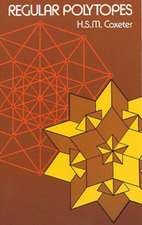Extended Linear Chain Compounds: Volume 2
Autor Joel S. Milleren Limba Engleză Paperback – 22 mar 2012
| Toate formatele și edițiile | Preț | Express |
|---|---|---|
| Paperback (3) | 398.53 lei 6-8 săpt. | |
| Springer Us – 11 noi 2011 | 398.53 lei 6-8 săpt. | |
| Springer Us – 22 mar 2012 | 400.47 lei 6-8 săpt. | |
| Springer Us – 28 mar 2012 | 403.15 lei 6-8 săpt. |
Preț: 400.47 lei
Nou
Puncte Express: 601
Preț estimativ în valută:
76.63€ • 80.21$ • 63.78£
76.63€ • 80.21$ • 63.78£
Carte tipărită la comandă
Livrare economică 31 martie-14 aprilie
Preluare comenzi: 021 569.72.76
Specificații
ISBN-13: 9781468439342
ISBN-10: 1468439340
Pagini: 536
Ilustrații: 532 p. 29 illus.
Dimensiuni: 152 x 229 x 28 mm
Greutate: 0.71 kg
Ediția:1982
Editura: Springer Us
Colecția Springer
Locul publicării:New York, NY, United States
ISBN-10: 1468439340
Pagini: 536
Ilustrații: 532 p. 29 illus.
Dimensiuni: 152 x 229 x 28 mm
Greutate: 0.71 kg
Ediția:1982
Editura: Springer Us
Colecția Springer
Locul publicării:New York, NY, United States
Public țintă
ResearchCuprins
1. An Added Dimension—Two-Dimensional Analogs of One-Dimensional Materials.- 1. Introduction—General Considerations.- 2. Carbon and Other Elemental Phases.- 3. Transition Metal Dichalcogenides and Trichalcogenides.- 4. Phosphates, Phosphonates, and Phosphinates.- 5. Silicates, Clays, and Related Substances.- 6. Metal Halides, Oxyhalides, and Related Compositions.- 7. Metal Cyanide, Macrocyclic, and Related Coordination Compounds.- 8. New Directions and Conclusions.- Notation.- Addendum.- References.- 2. The Electronic Structure of Semiconducting Polymers.- 1. Introduction.- 2. Electronic Excitations: Measurements and Concepts.- 3. The Molecular Solid State.- 4. Localization and Transport.- 5. Synopsis.- Notation.- References.- 3. Band Structures of One-Dimensional Inorganic, Organic, and Polymeric Conductors.- 1. Introduction.- 2. Energy Band.- 3. Band Theory.- 4. Electron—Electron Repulsion and Orbital Occupancy.- 5. Band Structures of Some Conducting Polymer Chains.- 6. Concluding Remarks.- Notation.- References.- 4. Quasi-One-Dimensional Conductors: The Peierls Instability, Pressure and Fluctuation Effects.- 1. Introduction.- 2. Phase transitions.- 3. Phase Transitions: Theoretical Treatment.- 4. Commensurate CDW State under Pressure.- 5. Fluctuations in Quasi-One-Dimensional Conductors.- 6. Fröhlich Fluctuation Conductivity.- 7. Single-Particle versus Fluctuating Conductivity.- Notation.- References.- 5. Optical Properties of One-Dimensional Systems.- 1. Introduction.- 2. Optical Properties of Solids.- 3. The Platinum Chain Salts.- 4. Linear Chain Organic Systems.- 5. Conducting Polymers.- 6. Conclusion.- Notation.- References.- 6. Superstructures and Phase Transitions in One-Dimensional Inorganic and Organic Materials.- 1. Structural Changes and PhaseTransitions in One-Dimensional Conductors.- 2. X-Ray Diffraction Patterns of Sinusoidal Structure.- 3. 2kF Superstructures of Partially Oxidized Bis(oxalato)platinate Complexes.- 4. 4kF–2kF Transition in K1.75[Pt(CN)4]·1.5H2O, K(def)TCP.- 5. Monomer—Dimer (M-D) Transition of (Alkali Metal) (TCNQ) Complexes.- 6. Phase Transitions in N-Methyl-N-Ethylmorpholinium-bis-(7,7,8,8-tetracyano-p-quinodimethanide)(MeEtM) (TCNQ)2—A Large-U Model for 1 : 2 TCNQ Salts.- 7. High-Pressure Structures and Phase Transitions in K2[Pt(CN)4]Br0.3·3H2O, KCP(Br).- Notation.- References.- 7. X-ray, Neutron, and Electron Scattering Studies of One-Dimensional Inorganic and Organic Conductors.- 1. Introduction.- 2. Structural Results in K2Pt(CN)4Br0.3·3H2O.- 3. Organic Solids—7,7,8,8-Tetracyano-p-quinodimethane (TCNQ) Charge Transfer Salts.- 4. Structural Results in MX3 (M = Ta, Nb; X = S, Se).- 5. Concluding Remarks.- Notation.- References.- 8. Photoconductive Properties of Organic Assemblies and a Comparison with Dark Conductors.- 1. Introduction.- 2. Some Chemical Aspects of Charge Generation and Transport.- 3. Some Qualitative Energetics of Light-Induced Charge Generation—Comparison with Dark Conductors.- 4. Three-Dimensional versus Low-Dimensional Interactions—The Importance of Surface Area.- 5. Three-Dimensionally Ordered Systems—Anthracene.- 6. Low-Dimensional Photoconductive Systems.- 7. From Excitons to Charge Carriers.- 8. Geminate Recombination.- 9. Charge Generation in Polymers.- 10. Charge Transport.- 11. Charge Transport in Polymers.- 12. Summary and Conclusions.- Notation.- References.- 9. Cation-Radical Salts of Tetrathiotetracene and Tetraselenotetracene: Synthetic Aspects and Physical Properties.- 1. Introduction.- 2. Synthesis and General Chemical and PhysicalProperties of Tetrathiotetracene (TTT) and Tetraselenotetracene (TSeT).- 3. Cation–Radical Salts of Tetrathiotetracene (TTT) and Tetraselenotetracene (TSeT) with Inorganic Anions.- 4. Complexes of Tetrathiotetracene (TIT) and Tetraselenotetracene (TSeT) with Organic and Metal–Organic Acceptors.- 5. Peierls Transition in Nonstoichiometric Series of (TTT)2 I3+? Compounds.- 6. Peierls-Type Transition in the Isostructural Salts (TSeT)2C1 and (TSeT)2Br.- Notation.- References.- 10. Structural Aspects of One-Dimensional Conductors Based on Tetrathiafulvalene and Tetrathiatetracene.- 1. Introduction.- 2. Structures of Charge Transfer Complexes Based on Tetrathiatetracene (TTT) and Tetraselenotetracene (TSeT).- 3. Structures of Charge Transfer Complexes Based on Tetrathiafulvalene (TTF).- 4. Conclusion.- Notation.- References.- 11. Metal Complexes of Tetrathiafulvalene and Related Compounds.- 1. Introduction.- 2. Characterization.- 3. Tetrathiafulvalene Salts.- 4. Derivatives of Neutral Tetrathiafulvalene.- 5. Complexes with Metal—Sulfur Bonds.- 6. Metal—Tetrathialene Complexes.- 7. Bis(dithiolene) Metal—Thiacarbon Complexes.- Notation.- References.
























